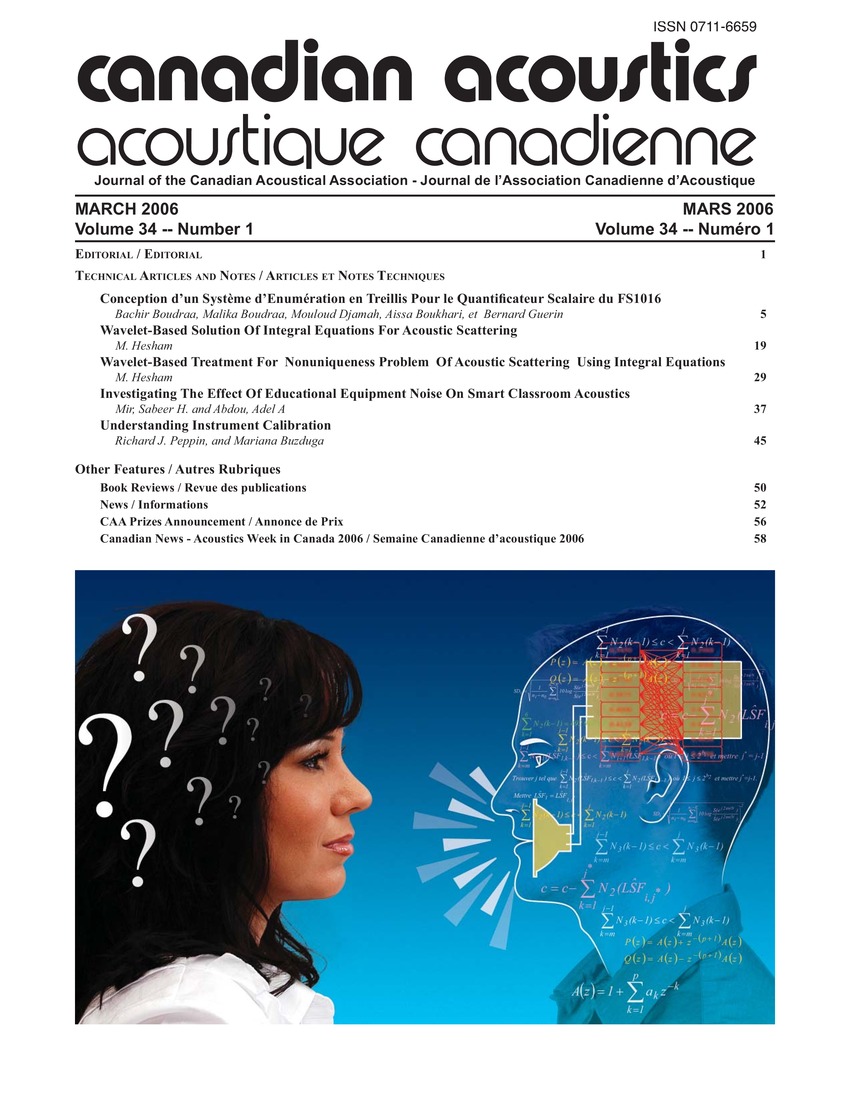Design of a trellis enumeration system for the scalar quantifier of the Federal Standard FS 1016
Keywords:
Algorithms, Bit error rate, Signal processing, Spectrum analysis, Speech coding, Vector quantization, CELP FS1016, Enumeration algorithm, Line Spectrum Frequencies (LSF), Speech signalAbstract
In the present study, we were interested in the reduction of the bit-rate observed in the speech coder named CELP FS1016 (federal standard developed by the US department of the defense " DoD "). More precisely, the quantization of the Line Spectrum Frequencies (LSF) parameters was concerned. In the standard CELP FS1016, these coefficients are derived from the input speech signal through linear prediction analysis of each 30-ms frame. A direct scalar quantization at 34 bits per frame is used. We considered the bit rate too high and we propose the use of an enumeration technique in conjunction with a treillis search coding schemes for speech LSF parameters, to reduce this rate to 30 bits per frame. To this end. we first did a thorough analysis of the different possible combinations given by the tables of the scalar quantization initially used in the FS 1016. The analysis revealed that this quantization was not optimum. Indeed, we found that many combinations of quantization levels can not be used because they can lead to an unstable synthesis filter. Then, we exploit the natural ordering of the LSF to design an enumeration algorithm with a trellis schemes that reduces the bit rate of the LSF coefficients from 34 to 30 bits without decreasing the performance of the coder (an equivalent spectral distortion is obtained with the two quantizers).Additional Files
Published
How to Cite
Issue
Section
License
Author Licensing Addendum
This Licensing Addendum ("Addendum") is entered into between the undersigned Author(s) and Canadian Acoustics journal published by the Canadian Acoustical Association (hereinafter referred to as the "Publisher"). The Author(s) and the Publisher agree as follows:
-
Retained Rights: The Author(s) retain(s) the following rights:
- The right to reproduce, distribute, and publicly display the Work on the Author's personal website or the website of the Author's institution.
- The right to use the Work in the Author's teaching activities and presentations.
- The right to include the Work in a compilation for the Author's personal use, not for sale.
-
Grant of License: The Author(s) grant(s) to the Publisher a worldwide exclusive license to publish, reproduce, distribute, and display the Work in Canadian Acoustics and any other formats and media deemed appropriate by the Publisher.
-
Attribution: The Publisher agrees to include proper attribution to the Author(s) in all publications and reproductions of the Work.
-
No Conflict: This Addendum is intended to be in harmony with, and not in conflict with, the terms and conditions of the original agreement entered into between the Author(s) and the Publisher.
-
Copyright Clause: Copyright on articles is held by the Author(s). The corresponding Author has the right to grant on behalf of all Authors and does grant on behalf of all Authors, a worldwide exclusive license to the Publisher and its licensees in perpetuity, in all forms, formats, and media (whether known now or created in the future), including but not limited to the rights to publish, reproduce, distribute, display, store, translate, create adaptations, reprints, include within collections, and create summaries, extracts, and/or abstracts of the Contribution.


